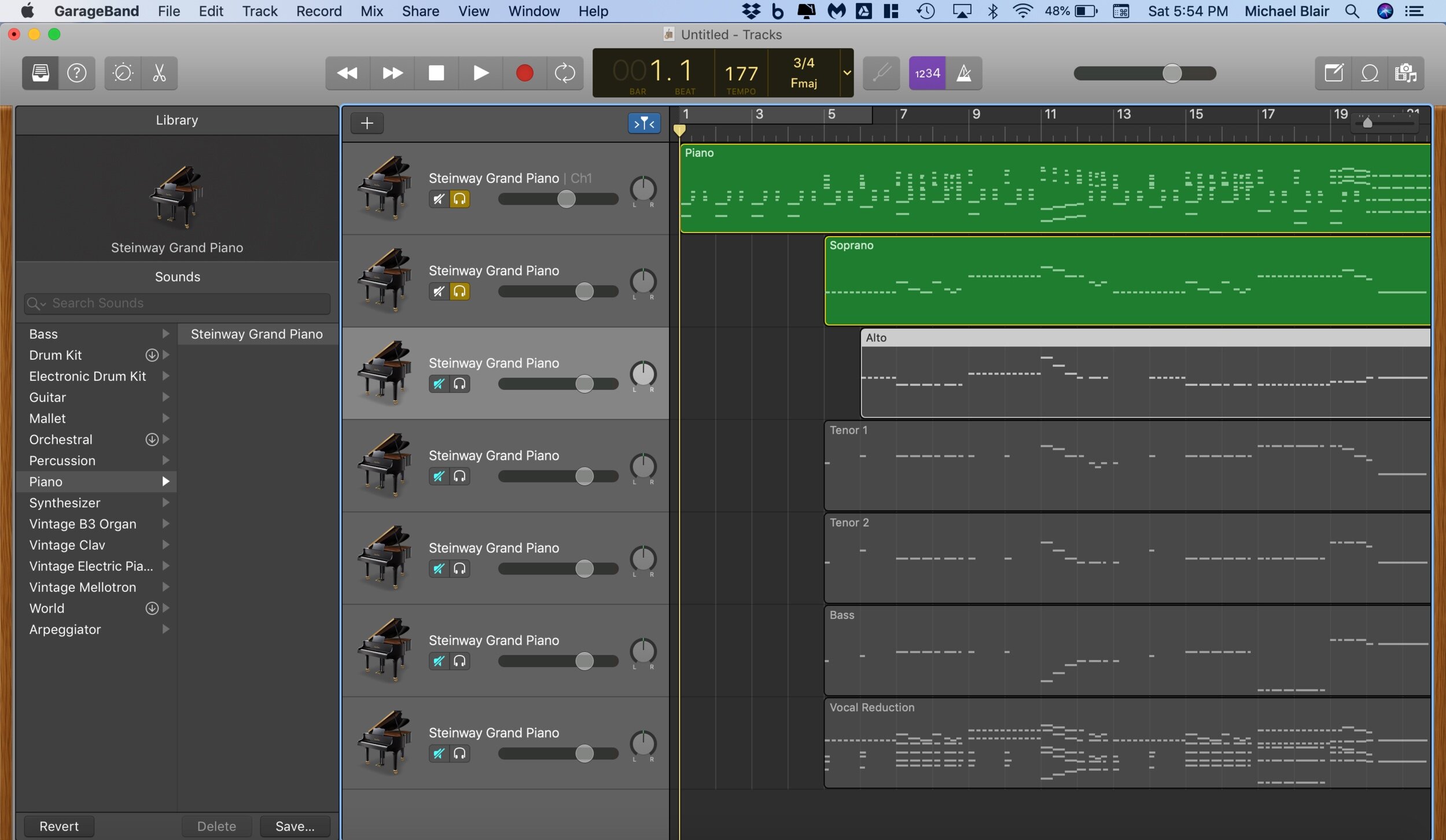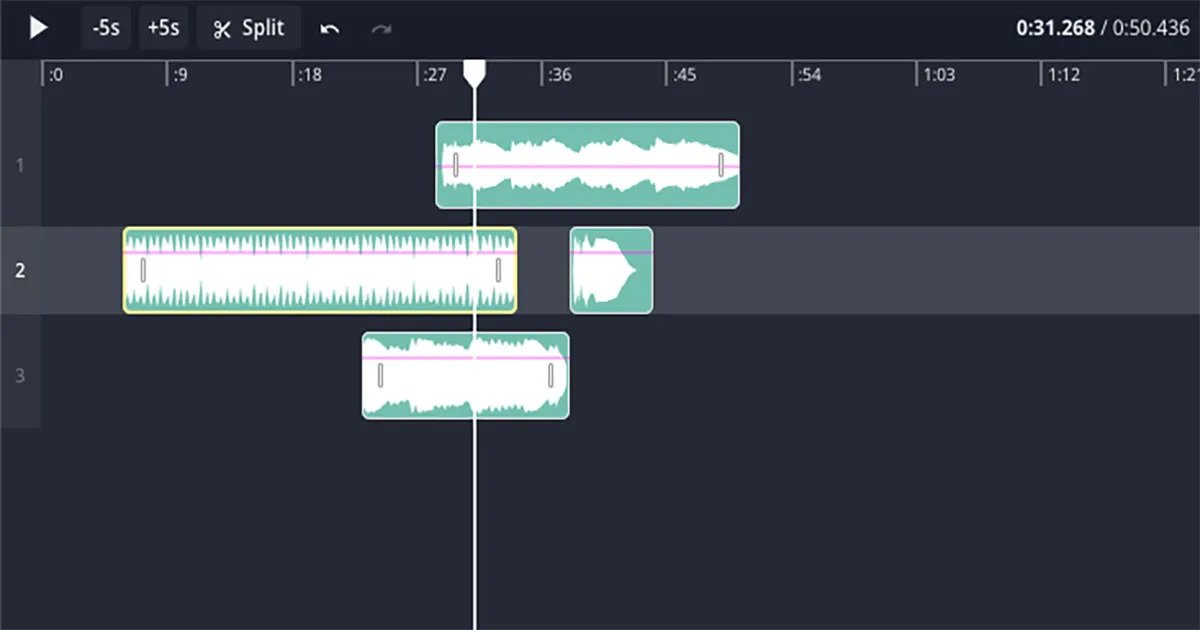Home>Production & Technology>MIDI>How To Convert A MIDI File To MP3


MIDI
How To Convert A MIDI File To MP3
Published: February 20, 2024
Learn how to convert a MIDI file to MP3 with ease. Follow our simple guide to convert your MIDI files to high-quality MP3 format.
(Many of the links in this article redirect to a specific reviewed product. Your purchase of these products through affiliate links helps to generate commission for AudioLover.com, at no extra cost. Learn more)
Table of Contents
Introduction
In today's digital age, music has become an integral part of our lives. Whether it's creating original compositions or arranging existing pieces, musicians and music enthusiasts often work with MIDI (Musical Instrument Digital Interface) files. MIDI files are a versatile format used to store musical data, such as notes, tempo, and instrument information, in a compact and editable form. While MIDI files are perfect for music production and editing, they may not be as widely compatible as MP3 files, which are more commonly used for sharing and playback purposes.
Converting a MIDI file to MP3 allows for broader accessibility and ease of sharing, making it a valuable process for musicians and music producers. By transforming a MIDI file into the widely supported MP3 format, the music can be easily shared, streamed, and enjoyed across various platforms and devices.
In this article, we will explore the intricacies of converting MIDI files to MP3, delving into the underlying differences between these file formats and examining the various methods available for seamless conversion. Whether you're a seasoned musician, a budding producer, or simply someone looking to convert MIDI files for personal use, this guide will equip you with the knowledge and tools necessary to carry out this conversion efficiently and effectively.
Understanding the nuances of MIDI and MP3 files, as well as the different approaches to conversion, will empower you to preserve the integrity of your musical creations while ensuring optimal compatibility and accessibility. So, let's embark on this journey to unravel the art of converting MIDI files to MP3, opening up a world of possibilities for sharing and enjoying your musical endeavors.
Understanding MIDI and MP3 Files
MIDI Files:
MIDI, which stands for Musical Instrument Digital Interface, is a technical standard that allows electronic musical instruments, computers, and other devices to communicate and synchronize with one another. Unlike audio files, MIDI files do not contain actual audio data. Instead, they store instructions for playing music, such as note values, pitch, velocity, vibrato, panning, and clock signals for tempo. This makes MIDI files incredibly lightweight and versatile, as they can be easily edited and manipulated without losing sound quality.
One of the key advantages of MIDI files is their flexibility in terms of instrumentation. They are not limited to specific sounds or instruments, allowing musicians to change the assigned instruments and alter the musical arrangement without re-recording the entire piece. Additionally, MIDI files are ideal for music production and composition, as they provide a convenient platform for editing and refining musical ideas.
MP3 Files:
On the other hand, MP3 (MPEG-1 Audio Layer 3) files are a popular and widely compatible audio format known for their high compression ratio. MP3 files contain actual audio data that has been compressed to reduce file size while maintaining a reasonable level of sound quality. This compression makes MP3 files suitable for storage and distribution, as they require less disk space and can be easily shared and played on various devices and platforms.
MP3 files are commonly used for music distribution, online streaming, and personal listening. They offer a balance between file size and audio quality, making them a preferred choice for sharing music over the internet and storing large music collections on digital devices.
Contrasting Characteristics:
In summary, MIDI files focus on storing musical instructions and data, enabling flexibility and editability, while MP3 files contain compressed audio data, prioritizing smaller file sizes and widespread compatibility. Understanding the distinct characteristics of MIDI and MP3 files is essential for navigating the process of converting MIDI to MP3 effectively, ensuring that the integrity and essence of the music are preserved throughout the conversion process.
Methods for Converting MIDI to MP3
When it comes to converting MIDI files to the widely compatible MP3 format, there are several methods available, each offering its own advantages and considerations. Whether you prefer online conversion tools or dedicated software, the goal remains the same: to seamlessly transform MIDI data into high-quality audio that can be easily shared and enjoyed. Let's explore the various approaches to MIDI to MP3 conversion:
Using Online Conversion Tools
Online conversion tools provide a convenient and accessible way to convert MIDI files to MP3 without the need for additional software installation. These web-based platforms typically offer a user-friendly interface where users can upload their MIDI files and initiate the conversion process with just a few clicks. The conversion is often performed on the server side, alleviating the need for intensive processing power on the user's device.
One of the key benefits of online conversion tools is their accessibility from any internet-connected device, making them suitable for users who may not have access to specialized software or prefer a quick and straightforward conversion process. However, it's important to consider the file size limitations and potential privacy concerns when using online conversion services.
Converting MIDI to MP3 with Software
Dedicated software applications designed for audio conversion and editing provide a comprehensive and customizable approach to converting MIDI files to MP3. These programs often offer a range of features, including advanced audio processing, file format compatibility, and the ability to fine-tune various aspects of the conversion process.
By using specialized software, users can exert greater control over the conversion parameters, such as audio quality, bit rate, and file metadata. This level of customization ensures that the resulting MP3 files meet specific requirements and quality standards, making it ideal for professional musicians and audio engineers seeking precise control over the conversion process.
Whether opting for online conversion tools or dedicated software, it's essential to consider factors such as file security, conversion speed, and output quality when selecting the most suitable method for converting MIDI to MP3. Each approach offers its own set of advantages, catering to diverse user preferences and technical requirements.
By understanding the available methods for converting MIDI to MP3, users can choose the most appropriate approach based on their specific needs and preferences, ultimately enabling them to share and enjoy their musical creations in the widely supported MP3 format.
Using Online Conversion Tools
Online conversion tools provide a convenient and accessible way to convert MIDI files to MP3 without the need for additional software installation. These web-based platforms typically offer a user-friendly interface where users can upload their MIDI files and initiate the conversion process with just a few clicks. The conversion is often performed on the server side, alleviating the need for intensive processing power on the user's device.
One of the key benefits of online conversion tools is their accessibility from any internet-connected device, making them suitable for users who may not have access to specialized software or prefer a quick and straightforward conversion process. These tools often offer a seamless and intuitive user experience, allowing users to upload their MIDI files, select the desired output format (in this case, MP3), and initiate the conversion process with minimal effort.
Additionally, online conversion tools can be particularly useful for individuals who require occasional MIDI to MP3 conversion and do not want to install dedicated software for this specific task. By leveraging these web-based platforms, users can quickly transform their MIDI files into MP3 format, enabling easy sharing and playback across a wide range of devices and platforms.
It's important to note that while online conversion tools offer convenience and accessibility, users should be mindful of potential limitations, such as file size restrictions and privacy considerations. Some online platforms may impose file size limits for free conversions, requiring users to opt for premium or paid services for larger files. Additionally, users should exercise caution when uploading sensitive or copyrighted material to online conversion tools, ensuring that their privacy and intellectual property rights are protected.
In summary, online conversion tools serve as a practical solution for converting MIDI files to MP3, offering a straightforward and accessible method for users to achieve their conversion goals without the need for specialized software. By leveraging these web-based platforms, individuals can seamlessly transform their musical creations into the widely compatible MP3 format, facilitating easy sharing and playback across various digital platforms and devices.
Converting MIDI to MP3 with Software
Dedicated software applications designed for audio conversion and editing provide a comprehensive and customizable approach to converting MIDI files to MP3. These programs often offer a range of features, including advanced audio processing, file format compatibility, and the ability to fine-tune various aspects of the conversion process.
By using specialized software, users can exert greater control over the conversion parameters, such as audio quality, bit rate, and file metadata. This level of customization ensures that the resulting MP3 files meet specific requirements and quality standards, making it ideal for professional musicians and audio engineers seeking precise control over the conversion process.
One of the key advantages of using dedicated software for MIDI to MP3 conversion is the ability to optimize the audio quality and output settings according to individual preferences and technical specifications. Users can adjust parameters such as bit rate, sample rate, and audio codec to achieve the desired balance between file size and audio fidelity. This level of control is particularly valuable for musicians and producers who prioritize maintaining the highest possible audio quality during the conversion process.
Furthermore, specialized software often provides additional features for audio enhancement and post-conversion processing. Users can apply audio effects, equalization, and mastering techniques to the converted MP3 files, ensuring that the final output meets professional standards and reflects the intended sonic characteristics of the original MIDI composition.
In addition to audio customization, dedicated software offers a seamless and efficient workflow for batch conversion of multiple MIDI files to MP3. This capability streamlines the conversion process, saving time and effort for users dealing with large volumes of musical content.
Moreover, many software applications include metadata editing functionality, allowing users to embed relevant information such as artist name, track title, album details, and genre into the resulting MP3 files. This metadata enrichment not only enhances the organization and presentation of the music but also contributes to a more engaging and professional listening experience for the audience.
By leveraging dedicated software for MIDI to MP3 conversion, users can harness advanced tools and capabilities to ensure that the resulting audio files align with their artistic vision and technical requirements. Whether it's refining the audio quality, applying post-conversion enhancements, or managing metadata, the flexibility and precision offered by specialized software empower musicians and producers to deliver high-quality MP3 versions of their MIDI compositions, ready for sharing, distribution, and enjoyment across diverse digital platforms and devices.
Tips for Quality Conversion
Achieving a high-quality conversion from MIDI to MP3 involves considerations beyond the technical process of file format transformation. It encompasses a holistic approach that prioritizes preserving the essence and integrity of the musical composition while optimizing the output for compatibility, fidelity, and user experience. Here are essential tips to ensure a seamless and top-notch conversion:
-
Optimize MIDI Arrangement: Before initiating the conversion process, it's beneficial to review and optimize the MIDI arrangement. This includes refining instrument selections, adjusting note velocities, and fine-tuning musical expression to ensure that the essence of the composition is captured effectively in the resulting MP3 file.
-
Select Appropriate Bit Rate: When converting MIDI to MP3, the choice of bit rate significantly impacts the audio quality and file size. Opting for a higher bit rate, such as 320 kbps, ensures better sound reproduction, especially for complex musical arrangements. However, for simple compositions or scenarios where file size is a concern, a lower bit rate may suffice.
-
Consider Sample Rate: The sample rate determines the frequency at which audio samples are captured during the conversion process. For MIDI to MP3 conversion, a standard sample rate of 44.1 kHz is generally suitable for maintaining audio fidelity. However, for specific requirements, such as high-resolution audio, a higher sample rate may be preferred.
-
Utilize High-Quality Soundfonts: Soundfonts play a crucial role in determining the sonic characteristics of the resulting MP3 file. By utilizing high-quality soundfonts or virtual instruments during the MIDI playback and conversion process, users can enhance the overall audio quality and ensure that the timbre and nuances of the instruments are accurately represented in the MP3 output.
-
Fine-Tune EQ and Mixing: Prior to conversion, applying subtle equalization and mixing adjustments can further enhance the sonic balance and clarity of the composition. By addressing frequency imbalances and optimizing the mix, users can elevate the overall listening experience and ensure that the converted MP3 reflects the intended tonal characteristics.
-
Review Metadata and Tagging: Adding relevant metadata, including artist name, track title, album information, and genre, to the resulting MP3 files enhances organization and facilitates seamless integration into music libraries and digital platforms. This step contributes to a professional presentation and ensures that the music is appropriately attributed and categorized.
-
Quality Assurance and Testing: After the conversion process, it's essential to conduct thorough quality assurance by listening to the converted MP3 files across different playback systems and devices. This step allows for identifying any potential anomalies or artifacts that may have arisen during the conversion, ensuring a consistent and high-quality listening experience for the audience.
By adhering to these tips, individuals can elevate the MIDI to MP3 conversion process, ensuring that the resulting audio files encapsulate the essence and artistry of the original composition while meeting the highest standards of audio quality and compatibility.
Conclusion
In the realm of music creation and distribution, the ability to seamlessly convert MIDI files to MP3 format holds significant value, enabling musicians, producers, and enthusiasts to share their musical creations across diverse digital platforms and devices. Throughout this exploration of MIDI to MP3 conversion, we've delved into the intrinsic differences between these file formats, examined various methods for conversion, and highlighted essential tips for achieving high-quality results. As we draw this journey to a close, it's evident that the process of converting MIDI to MP3 is not merely a technical endeavor but a harmonious fusion of art and technology, where the essence of musical expression converges with the intricacies of digital audio transformation.
The conversion from MIDI to MP3 represents a bridge between the creative realm of musical composition and the expansive landscape of digital audio distribution. By harnessing the flexibility of MIDI files, musicians can craft intricate compositions, experiment with diverse instrumentations, and refine their musical ideas with unparalleled freedom. However, the true potential of these musical creations is unlocked through the transformation into the widely compatible MP3 format, where the artistry and emotion encapsulated in the MIDI files can resonate with audiences worldwide.
Whether through the utilization of online conversion tools, which offer convenience and accessibility, or the precision and customization afforded by dedicated software applications, individuals embarking on the MIDI to MP3 conversion journey are empowered to tailor their musical creations for seamless sharing and immersive listening experiences. The nuances of musical expression, from the timbre of instruments to the dynamics of performance, are preserved and translated into the MP3 format, ensuring that the essence of the original composition transcends technological barriers and resonates with listeners on a profound level.
As we navigate the intricacies of MIDI to MP3 conversion, it becomes evident that this process is not merely about file format transformation but a testament to the enduring power of music to transcend boundaries and connect people across the globe. The seamless conversion from MIDI to MP3 amplifies the reach and impact of musical compositions, allowing them to traverse digital landscapes, resonate with diverse audiences, and enrich the tapestry of musical experiences.
In essence, the journey of converting MIDI to MP3 is a testament to the enduring bond between creativity and technology, where the artistry of musical expression converges with the transformative capabilities of digital audio. Through this convergence, musicians and creators can share their musical narratives, evoke emotions, and inspire listeners, transcending the constraints of file formats to forge meaningful connections through the universal language of music.











